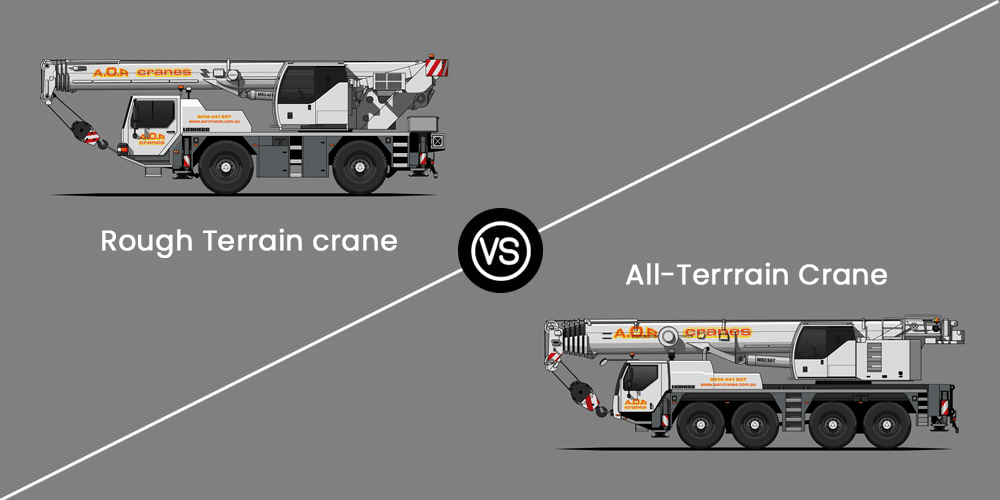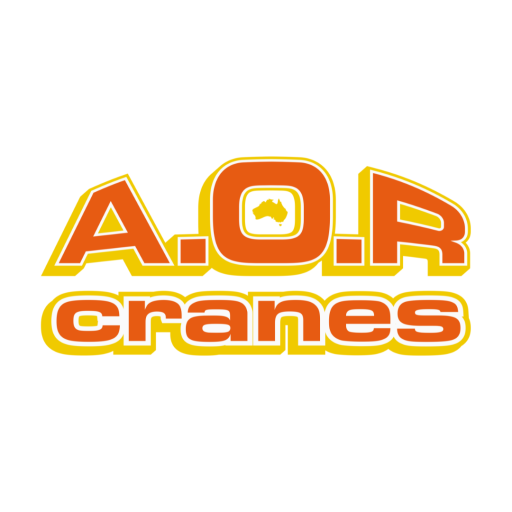
Rough Terrain Crane vs All Terrain Crane: What’s the Right Choice for Your Job Site?
When you’re selecting a crane for your project, the terrain and access conditions can significantly impact both safety and efficiency. Two popular options often come up in crane hire conversations: rough-terrain cranes and all-terrain cranes.
Both are mobile cranes with telescopic booms, but their strengths and ideal use cases are very different. Here’s what you need to know when choosing between them.
What Is a Rough Terrain Crane?
Rough terrain cranes are specifically made to function in off-road conditions. It’s built on a single cab mounted on a four-wheel chassis with oversized tires and high ground clearance.
- Load capacity range: 30 to 130 tons
- Maximum boom length: 35 to 50 meters
- Typical height reach (with jib): Up to 70 meters
- Steering: 4-wheel, including crab steering for tight job sites
- Speed: Generally under 40 km/h, not road-legal
These cranes are commonly used in mining, oil and gas sites, pipeline projects, and other places where the ground is uneven, soft, or sloped. They’re compact and maneuverable, making them ideal for tight-access construction areas with minimal setup space.
However, they cannot be driven on public roads and must be transported to the site via low-loaders or trailers.
What Is an All-Terrain Crane?
An all-terrain crane is a hybrid machine that combines the high lifting capacity of a truck-mounted crane with the off-road capability of a rough-terrain crane. These cranes are designed to withstand challenging site conditions as well as highway travel.
- Load capacity range: 40 to 1,200 tons
- Boom length: Typically, 60 to 80 meters
- Maximum height (with luffing jib): Up to 160 meters
- Axles: 4 to 9, depending on tons
- Road speed: Up to 85 km/h, fully road-legal
All-terrain cranes are ideal for large infrastructure jobs, such as wind turbine erection, bridge placement, tower installations, and multi-site construction work. With the ability to travel between sites under their own power, they eliminate the need for secondary transport.
Due to their size and capacity, they may require more setup time, especially when counterweights and jibs are involved.
Rough Terrain Crane vs All Terrain Crane: Key Differences
| Feature | Rough Terrain Crane | All Terrain Crane |
| Purpose | Built specifically for off-road, uneven, or rugged job sites | Designed for both on-road and off-road applications |
| Mobility on Roads | Not road legal – must be transported by trailer to the site | Fully road legal – can drive on highways and streets |
| Tyres & Suspension | Large, wide tires for high grip on dirt, mud, and uneven ground | Multi-axle suspension and tires suitable for smooth and rough surfaces |
| Speed | Low travel speed; not meant for transport | Can travel up to 80-85 km/h on roads |
| Setup Time | Quick to set up for short-term, single-site use | May require more setup, but ideal for multi-site projects |
| Lifting Capacity | Generally lower (up to ~130 tons max) | Higher capacity (can exceed 1,000 tons) |
| Boom Length | Up to 50m | Up to 80m (160m with jib) |
| Size | More compact – ideal for tight or confined spaces | Larger in size, but more versatile for different terrains |
| Cost to Hire | Typically cheaper for short-term or rough site jobs | Usually more expensive but offers greater versatility |
| Use Case Examples | Mines, remote areas, construction in rough terrain, oil & gas fields | Urban sites, road construction, wind turbine erection, high-rise installs |
Which One Should You Hire?
Choose a rough terrain crane if:
- You’re working on uneven or muddy terrain
- The project is remote, with limited road access
- Your lift involves moderate weights under 130 tons
- You need a compact crane that can navigate tight or sloped sites
Choose an all-terrain crane if:
- Your job requires travel between sites
- You’re working in both urban and remote environments
- You need to lift above 150 tons
- You’re planning complex lifts like high-rise construction or turbine erection
Final Word
Whether you need it to work in mines or high-rise installations, the right crane can make or break the day. Both crane types offer impressive lift capacity and technology, but choosing incorrectly can lead to delays, over-costing, or worse safety risks.
Need help choosing the right crane in Sydney?
Reach out to the experts at AOR Cranes, Australia’s trusted crane hire specialists, to get the job done safely and efficiently, no matter the scale or complexity.

AOR Cranes is dedicated to delivering top-notch crane hire services with safety, reliability, and expertise at the core. With over 30 years of experience, we handle every project with care and expertise to meet your needs.








